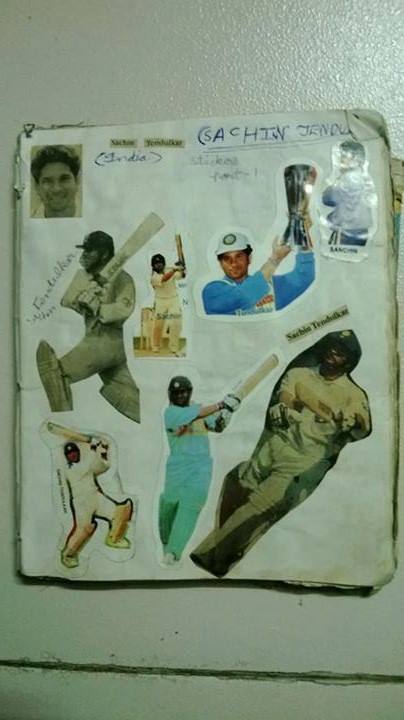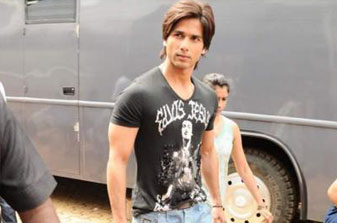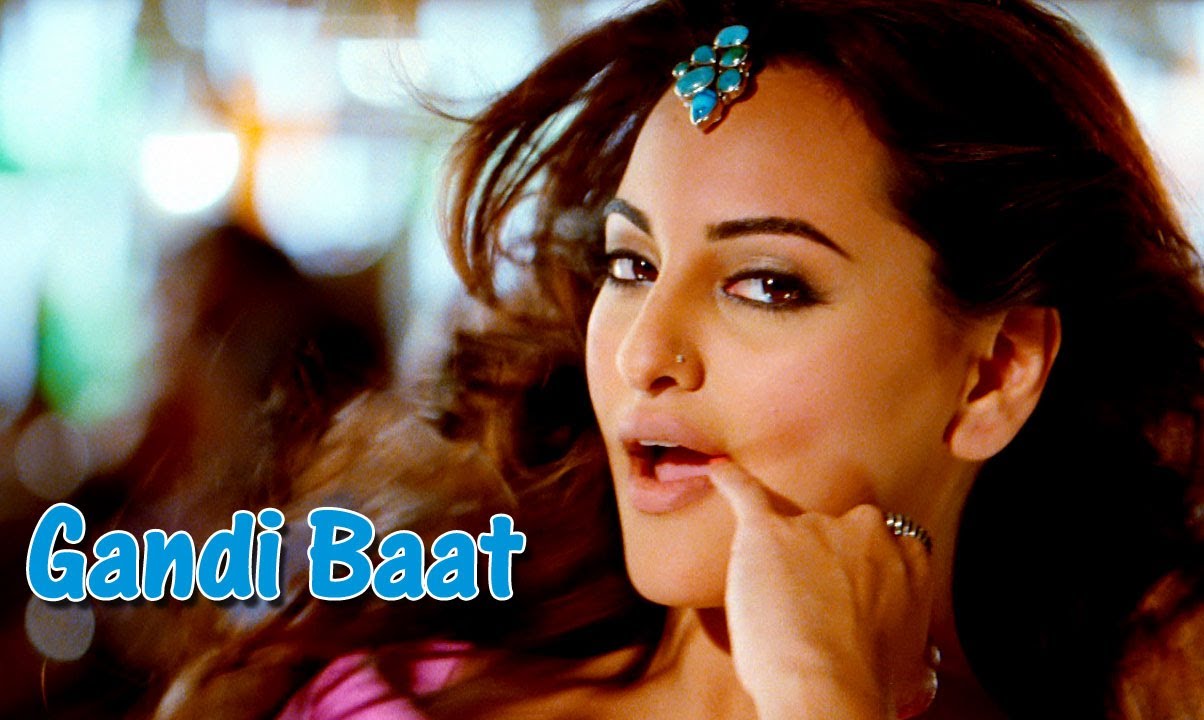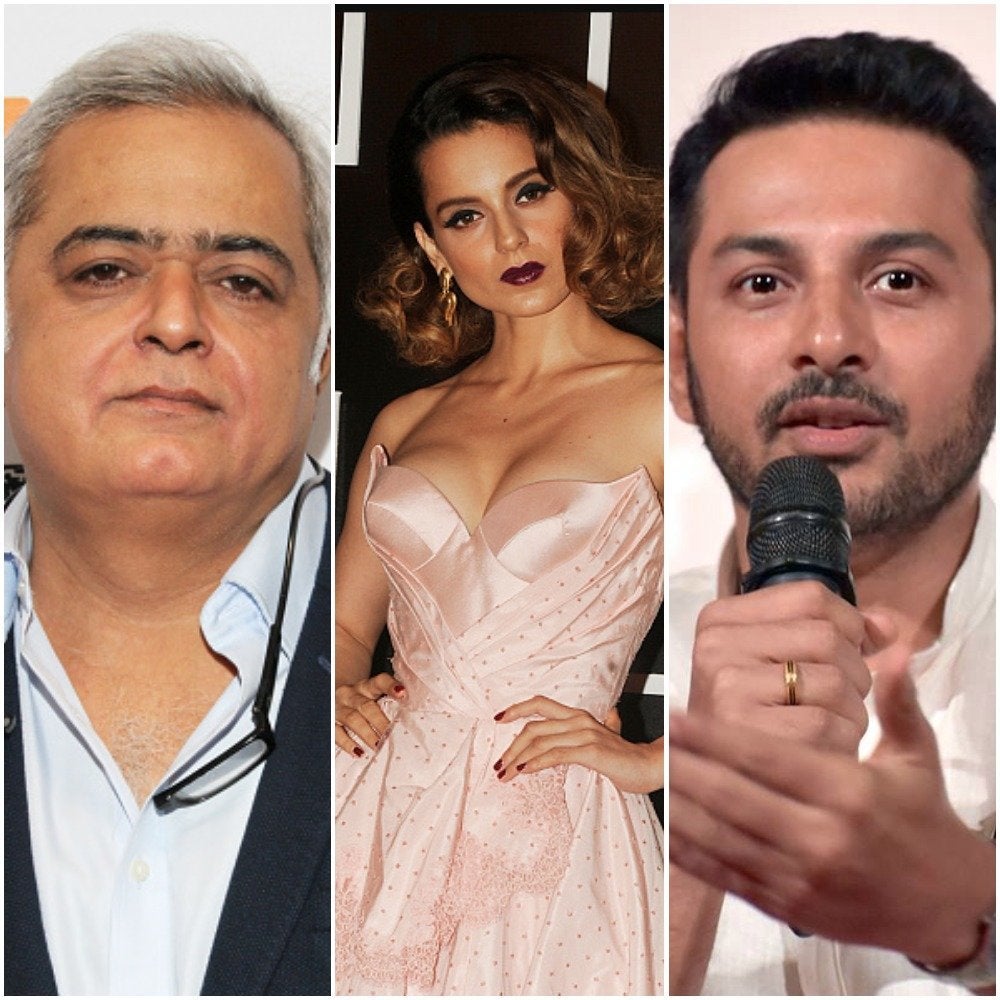Source: https://thealternative.in/arts-culture/shahrukh-khan-and-violence-against-women/
A surprisingly gender sensitive view from traditional Bollywood came recently when Shahrukh Khan announced that his films henceforth would carry the leading lady’s name before his, in the credits. Even if we were to dismiss this as tokenism, it is a reflection of how much our cinema has changed since the days when the male was the all encompassing figure around which the women, relegated to playing the supporting roles of lover/ vamp/ item girl, revolved.
It is fit that this gesture comes from an actor who has been in the vanguard in changing the image of the Bollywood hero from the macho man to the softer, sensitive metrosexual male. The much tarnished image of Bollywood, especially in the wake of the recent escalation of violence against women in the news, could well do with more such gestures if its sheen is to be restored.
Seventies: ‘Twas the age of angry young men
In the nebulous space between society and art, and the effect of one on the other, we often react to the portrayal of ourselves and especially women on celluloid with criticism, laying the blame squarely at cinema’s doorstep. Sometimes we forget that its primary job is entertaining us, and we make it the bogeyman, at whose feet we rest our failures as a culture and as a society. The critics of mainstream cinema point that the portrayal of women as sex objects, the culture of stalking, titillating images of rape and violence have had such an effect on our psyches, that we are now Pavlovian followers of our screen heroes.
Stretching this mantle of responsibility to the past few decades, we can analyze the antics of our on-screen idols and their bearing upon our behaviour. Their idols were Amitabh Bachchan, Anil Kapoor, Mithun Chakraborty and the angry young men of the eighties. Men who physically fought for the honour of their women, mostly because the violation of their sweethearts and sisters meant the humiliation of the family, and by extension themselves. Post the punches thrown to the villain, and the successful rescue of the said sister, she disappeared from the narrative and was relegated, one assumes to the kitchen and confined most certainly to the home.
In the breezy romances fronted by Aamir and Salman Khan, the blood and gore quotient was a bit toned down, for this generation was not one of rebels, with an angst against the system. Love became their rebellion and class differences their battlefield. But the narrative remained traditional. The heroine was still at the mercy of beasts and it was the man’s job to protect her from sexual assault (Maine Pyar Kiya). She dressed in western wear only for her lover and the rest of the time she chastely sat by his mother shelling peas, and helping in the kitchen, doing what all virtuous women do. The villain in this film in fact is a westernised working woman mocked by the hero and his friends.
The precursor of cinema’s tradition of stalking as a means to woo, was of course Bachchan’s character who pestered his woman for a kiss ( Jumma Chumma De De) in full public view. Aamir Khan, in Dil , followed in his footsteps, and his idea of romance was tormenting a reluctant college girl, described in song as as a pole giving out electricity. Finally, of course, as was the popular narrative of that time, she succumbs to his charm.
Shahrukh Khan in the 90′s romantic comedy, Kabhi Haa Kabhi Naa
Along came a man at the start of the nineties, that women had been waiting for all their lives. A completely ordinary looking man with floppy hair and an unimpressive physique. And he had a whole new way of wooing the girls. The characters Shahrukh Khan played did not throw any punches or save them from villains. He just let them be. In an early film Raju Ban Gaya Gentleman, his lady love is a working woman. She helps him climb the ladder of success and shares his dreams. He loves her without telling her to change, to quit her job, to dress differently, and that is when the girls of India discovered that maybe there was another way to love. So even when he did not get the love of his life in Kabhi Haan Kabhi Naa, after lying, scheming (but never beating up his rival who is also his best friend) and finally repenting and letting her follow her heart, the love he received from the audience more than made up for the onscreen loss.
Crafting a masterpiece of the genre in Dilwale Dulhaniya Le Jayenge, debutante director Aditya Chopra instead of making his hero a macho man and getting him to run away with the woman of his dreams, makes him stay stay to woo not her, for she has already given him her heart, but for her father. Shahrukh Khan refuses to raise his fists or even his voice through most of the film. He does the most unmanly, unheroic tasks imaginable- arranging for laddoos and flowers, stocking kitchen supplies, selecting saris and feeding pigeons. Turning on its head the regressive ritual of karva chauth,the woman’s fast for her beloved, he wins hearts off and on screen by starving for his lady love, a feat no man has dared attempt before. Love now meant getting along with the beloved’s father and family, and the new age woman fell in love with a man who was ready to court rather than battle her father for her hand.
In film after film, Shahrukh Khan played the emancipated romantic, respectful of his women. His women were ruthlessly ambitious as in Yes Boss, where they went as far as going out with other men to serve their interests, and he continued to love them anyway. The girls in his films were never just glamour dolls thrown in for the song sequences. They played strong women characters with author backed roles. Madhuri Dikshit as the avenging angel in Anjaam, Rani Mukherjee as the wife who dares to walk out in Chalte Chalte, Karishma Kapoor and Madhuri Dikshit as rival actor dancers in Dil To Pagal Hai and an entire hockey team of girls in Chak De were as important as the male lead, if not more and there was always the possibility of them outshining Shahrukh Khan. But here was an actor confident enough to play a parallel lead, even a loser. Here was an actor with the ability to match up to a strong leading lady.
Shahrukh took on roles where he shared screen space with empowering female characters
Did society copy cinema then? Did men become more considerate lovers after watching these films? Did they wear their heart on their sleeves? Take no for an answer with grace? Treat women as equals? A small portion of the audience probably did, though to cite the influence of this kind of cinema as a major cause would be to undermine the sensitive urban Indian male subject to a host of influences. As society continued to evolve, more and more actors and filmmakers saw merit in the strong silent hero who let his eyes, and not his fists do the talking.
Shahrukh, the sensitive lover already belongs to a different era. For the time being, the cult of Salman Khan has taken over. And what he does best is beat up trainloads of bad men to save a girl from getting raped (Tere Naam) to audience applause, teaches amateurs the art of snagging women (Partner), makes infidelity seem glamorous (No Entry) and stalks a pretty helpless girl and then marries her (Dabanng).
Did the sensitive Indian male simply vanish overnight? If the contention is that films are the cause of our attitudes to women, why is it that only the ones that advocate misogynistic attitudes seem to work? Does it tell us something about how we are intrinsically as people? And should we even blame art for our attitudes? For our filmmakers and actors, like our villians, our stalkers and rapists all come from the same society. The conversation about art and its impact on society is a complex one and our conclusions, like our cinema need to be nuanced.
Tags: Amitabh Bachchan Salman Khan Shah Rukh Khan









May not be applicable to every film, but the overall this article reflects my thoughts.
bull crap article written by some srk fanatic.
“Crafting a masterpiece of the genre in Dilwale Dulhaniya Le Jayenge”
dont want to add anything more.ddlj ki bahas mien main jaana hi nahi chahta :3
Agree Baba.
The writer seems to have conveniently forgotten Baazigar and Darr, the movies which made SRK a huge star in the first place. In Baazigar SRK kills his innocent girlfriend because he found a better way to reach his goal by enticing her younger sister – he also kills another women and stuffs her into a suitcase. In Darr SRK stalks the woman, tries to kill her boyfriend (and later husband) thrice, kidnaps her and tries to forcibly marry her. He does similar things in Anjaam too. Even what he does initially with Divya in Deewana can be called stalking.
If all those macho heroes of 80s had to rescue the woman (sister/girlfriend) then did the hero of DDLJ not have to rescue Kajol from her Dad? If the movie was about women empowerment she would not be relying on Raj. She would have fought for her rights and declined to marry the guy her father had chosen for her.
yup.this article has a gross fanatic misreading of srks role in 90s. i think those very crooked characters made srk the star he was . he was different that your average bollywood hero.A guy who is obessesed but not courageous enough to say it on face. a person who employs unethical tactics to get to a girl.these traits could be offensive for some but it made srk an interesting star back. he is like a stalker and i am not talking about just darr, baazigar or anjaam, this includes even DDLj,kkhh and so on.
Why the stress on negative roles alone? Agree that SRK’s version of a lover has always been that of forceful in various degrees from assertive, to agressive to stalking.
Even Chalte Chalte borders to stalking though in the world of romance it can be seen as wooing the girl, because Rani’s character does show interest in him initially.
Anyway, I am surprised at your reaction to it. Rest are as expected. The grand topic ‘Slutty Savitri’ and the unanimous support it got is an example of what kind of things can be discussed here in this forum.
So I guess misogynistic representation of women will continue…
The stress on negative roles is because the author conveniently forgot to mention them because they don’t fit the narrative she was trying to build.
The author is saying “The precursor of cinema’s tradition of stalking as a means to woo, was of course Bachchan’s character who pestered his woman for a kiss (Jumma Chumma De De) in full public view.” and that Aamir followed in his footsteps with Dil by “tormenting a reluctant college girl”.
How can the author forget Darr which was the height of stalking with K..K..K.. Kiran? One can say that Shammi Kapoor’s characters always stalked the woman in his movies. One can say that Guru Dutt’s character was tormenting the heroine in Aar Paar. Dilip even played a rapist in Amar.
One can build a good narrative for Amitabh and his films too. An unmarried Amitabh and Parveen Babi are shown casually lying in bed in Deewar – is that not progressive for a movie released in 75? Amitabh is in love with a widow and there is a scene where Sanjeev Kumar talks about remarrying his widowed daughter-in-law in a 1975 movie Sholay. Is that not progressive? A couple of weeks back Shuddh Desi Romance made a big deal about live in relationships whereas Shakti showed Amitabh and Smita living together in 1982.
My main objection to the article is that she tries to take some movies of SRK and build a good narrative when SRK’s movies/characters are as guilty as the other stars movies/characters.
As for Slutty Savitri post I thought it was a funny, exaggerated way of looking at Deepika’s characters but I had supported Deepika’s acting when many thought she could not act.
Since you mentioned the skirt length picture again I had posted the “Judgements” photo in that thread not to show that those judgements were right but to show how wrongly people judge women based on skirt length.
I had given the link below that picture. It was by a female student.
https://www.huffingtonpost.com/2013/01/18/rosea-lake-vancouver-judgments-skirt-length-photo_n_2504950.html
phoneix – deepikas slutty savitri post is a sarcastic post written in a manner to invoke humour.it is your problem if you took it that seriously.and the word “slutty savitri” itself is taken from an srk film, OSO if i am not wrong. 😉
regarding your desperate attempt at taking higher moral ground for recent rape cases , you should chek the discussions made by many of us on this topic, much before you ddint care to discuss about it as CE had not released yet 😉 instead of shedding crocodile tears, we discussed practical aspects of womens safety.
i havent stressed on just the negative roles. bored and spuntik stressed on them. i took the names of ddlj, kkhh, dtph too. infact you can also include kabhi ha kabhi na (another movie where srk makes several unethical attempts to dupe a girl).
” Agree that SRK’s version of a lover has always been that of forceful in various degrees from assertive, to agressive to stalking”
you yourself have agreed to this. so where is the question of srks roles/characters being more progressive?
About DDLJ, the drama went on to winning parents acceptance more than the choice of either leads, as shown in the scene with Fairda Jalal, when she asks them to runaway. So Simran walking away from the marriage doesn’t come into the discussion in that particular scene.
Farida Jalal does say, ‘meri beti apni kushiyo ki bali nahi chadhayengi, wo apne pyar ki kurbani nahi degi’ in the earlier scene.
And also Simran is never shown as a liberated character. She stops her song and dance as soon as her dad returns home, hides her poems about her dream man, cries after discovering she might have slept with Raj, she chooses to participate in Karva Chauth etc .. striking a chord of most women who would want more freedom but do not dare to express it. So Raj is her chance to liberate herself.
The empowerment part happens only in the interaction between mom and daughter, very applicable to middle class oppression of women which doesn’t involve violence or denying education but neither gives women freedom in some aspects important to her.
Atleast I am no different. Just like Farida Jalal I have made up my mind that I won’t interfere in my daughters choice of clothes, make up, hair cut just for the heck what society dictates. I am sure many more of Indian women who haven’t even seen DDLJ would have decided the same. Because every generation has seen a few changes…
Author conveniently ignores Darr and Baazigar (both were male chauvinistic popular movies) that made SRK a overnight star.
But yeah, he has done more romantic movies than anything else in his career – so the larger point perhaps stand. Salman cant respect himself, how can he respect anyone else (male or female)???
Also the most female oriented blockbuster of recent times – Chak De India – was rejected by our ‘macho’ Salman and picked up by SRK …
ye sab toh theek hai par is article mein “violence against women” ka zikr kahan hai ?
^ SRK movies lack the 80’s cliche of Hero saving his sister/lady-love from getting raped in the streets – so lack of violence against women. 🙂
Unfortunately we are living in the age of gangrapes.
agreed.In the 80s, hero used to save herione from rapists. in the 90s era, srk himself is the “rapist”, sometimes less (kkhh, ddlj,dtph……) and sometimes more ( darr , baazigar,anjaam) pronounced 😀
LOL…the author has a stupid logic !! 😀
ROFL
Yeh kya hain … Manohar khaaniya kya ya Grah Shobha ya Sarita 😉 ?
@Sputnik – Our comments crossed on Darr, Baazigar …
Yeah. I replied to Baba and after I commented I saw you had mentioned Darr, Baazigar too 🙂
I think he was not for violence against women in Darr and Anjaam
In fact he loved those women 😀
In Baazigar, he wanted to be like Ram- One woman Man–so for Kajol he had to kill Shilpa.
In DDLJ – he showed women power by fighting like a woman in that last fight with parmeet sethi.
Reactions are just as I expected. Excessive attention to negative roles played by SRK by same people who are expert in slotting a character of a woman based on the length of her skirt. Deepika is a slut because she wears shorts in her films. Even rapist think like that.
Maybe, restricting the whole narrative to that SRK alone has irritated people. Well, its been a part of several of the romantic genre movies made in the last two decades. The larger point is acceptance of woman as a companion rather than what the article describes as ‘roles of lover/ vamp/ item girl’, which is case of most of his films from Badshaah to Chennai Express and RNBDJ
Hasn’t many of the same guys mocking at this article have referred SRK’s fan base as ‘auntie fanbase’ and Salman’s as ‘rickshaw wala fanbase’?? Proves the thought process involved …
Conveniently ignoring many films and selectively pointing out few
Salman- Bodyguard, ETT, Hum tumhare Hain Sanam (from Salman’s character’s pov), Biwi Number 1, Maine Pyaar Kiya
Aamir- Ghajini, RDB, DCH, AHAT, Rangeela, JJWS
All these films have what you/this article refers to as “The larger point is acceptance of woman as a companion rather than what the article describes as ‘roles of lover/ vamp/ item girl’ ”
Then Why single out Shahrukh ?
If you are pointing fingers at others who have commented against this article, because you think it singly focuses on Srk..then isnt that also the reason (it singling out Srk) why it appeals to you so much ?
@baba, do not agree with u on “in the 90s era, srk himself is the “rapist”, sometimes less (kkhh, ddlj,dtph……)”
and abt ur Deepika article- its very cheap so cant say more abt ur thinking. (btw katrina and aalia also wears short clothes)(one comment ws really funny- “in khjjs she couldn’t wear shorts because it couldn’t go with story” same applies for All other movies where she wears shorts.
about acting she is atleast better than katrina(remember boom, i guess that is enough) and aalia).. havn’t done yet on that article(it really made me frustrated and sick).
@sputnik and @bored agree 100%..
and @phonix understood ur point too.
though the article is nt correct, as said by @baba, @sputnik @bored
The author is right.
SRK and women should be treated equally.
hahhahaha Ritz/
I never felt the eighties stars (anry men or dancing men) or today’s stars (romantic or comedy ones) gave any flying f*** about women empowerment. The only thumbs up I will give is to SRK for lending his star power to a film like CDI – we need more films like that where women achieves it all, and men are just guiding/supporting factors. But since CDI is just one-off in srk’s filmography – it does not form any narrative.
India needs empowerment of women – not some stars fulfilling their romantic fantasies. And we also need men to stand up and fight against gangrapes – no i wont mind to see that rape scene cliche of eighties come back in our films.
it will be better if a women/herione is shown defending/escaping herself from a rape attempt rather than a hero coming and defending her.there are films like the high kick girl, chocolate , the kick etc which have such roles for women and has believable action too.but i would want to see scene of a normal untrained girl escaping such an incident by using may be h2so4 or gun or spray etc.ofc its very difficult to film such a scene in bw where historically women have always been perceived as weak .also the lack of imagination and creativity to pull off such a scene is almost impossible here.i am sure it would end up lookng tacky and unrealistic. it would need some extraordinary filmmaker with a good vision
Agreed full-heartedly Baba! Thats exactly what we need.
@Baba – hv u seen Dushman (98) and Sangharsh (99)? I always thought that Sangharsh was Akshay’s graduating point from a B-grade star.
yes seen both. sangharsh is copied from silence of the lambs with akshay playing the role of hannibal lecter. but the bw version is nowhere near the original. hannibal lecter is among my all time fav on screen characters along with Ras Al Ghul (batman begins) and Lester Burnham (american beauty).had written something on them once
https://feverbaba.blogspot.in/2013/02/my-top-3-screen-characters.html